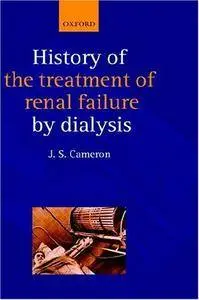J. Stewart Cameron, "A History of the Treatment of Renal Failure by Dialysis"
2002 | pages: 367 | ISBN: 0198515472 | PDF | 5,6 mb
2002 | pages: 367 | ISBN: 0198515472 | PDF | 5,6 mb
This book tells the extraordinary story of how the function of the first- and so far almost the only- human organ was replaced by a machine, and the "artificial kidney" entered medical and public folk-lore. A practical articial kidney, or dialyser, came by advances in science followed by the acquisition of new synthetic materials which made the application of these ideas possible. However it was the dedication and persistence of a number of talented pioneers who pressed ahead against professional oppostion to achieve success, first in the treatment of temporary, recoverable kidney failure, and then permanent renal shut-down which made it a success. The apparent high cost and limited availability of this form of treatment immediately raised ethical questiond which had never been questioned before, centering around equity of access to treatment, when and if treatment could be denied, and- worst of all- the agonising decision of when, once established, it should be stopped. Spiralling costs as the true number of people with kidney failure became evident raised major political and financial questions, which were addressed in different countries in different ways which reflected- but also helped change- patterns of how medical care is provided. In developed countries, the problem could be solved by allocating a disproportionate amount of money to the treatment of relatively few kidney patients, but in the developing world the cost of treatment still limits its availability, as it does all forms of modern health care. Nevertheless, today almost one million people world-wide are maintained alive following terminal kidney failure, two thirds of them by various forms of dialysis and the remainder bearing kidney transplants, almost always placed after a period on dialysis. The story is also the sum of the often heroic lives of these hundreds of thousands of patients, a few of whom have today been maintained alive and active for more than 35 years, and many of whom suffered known, but also unexpected complications as a result of their treatment.
My Link



